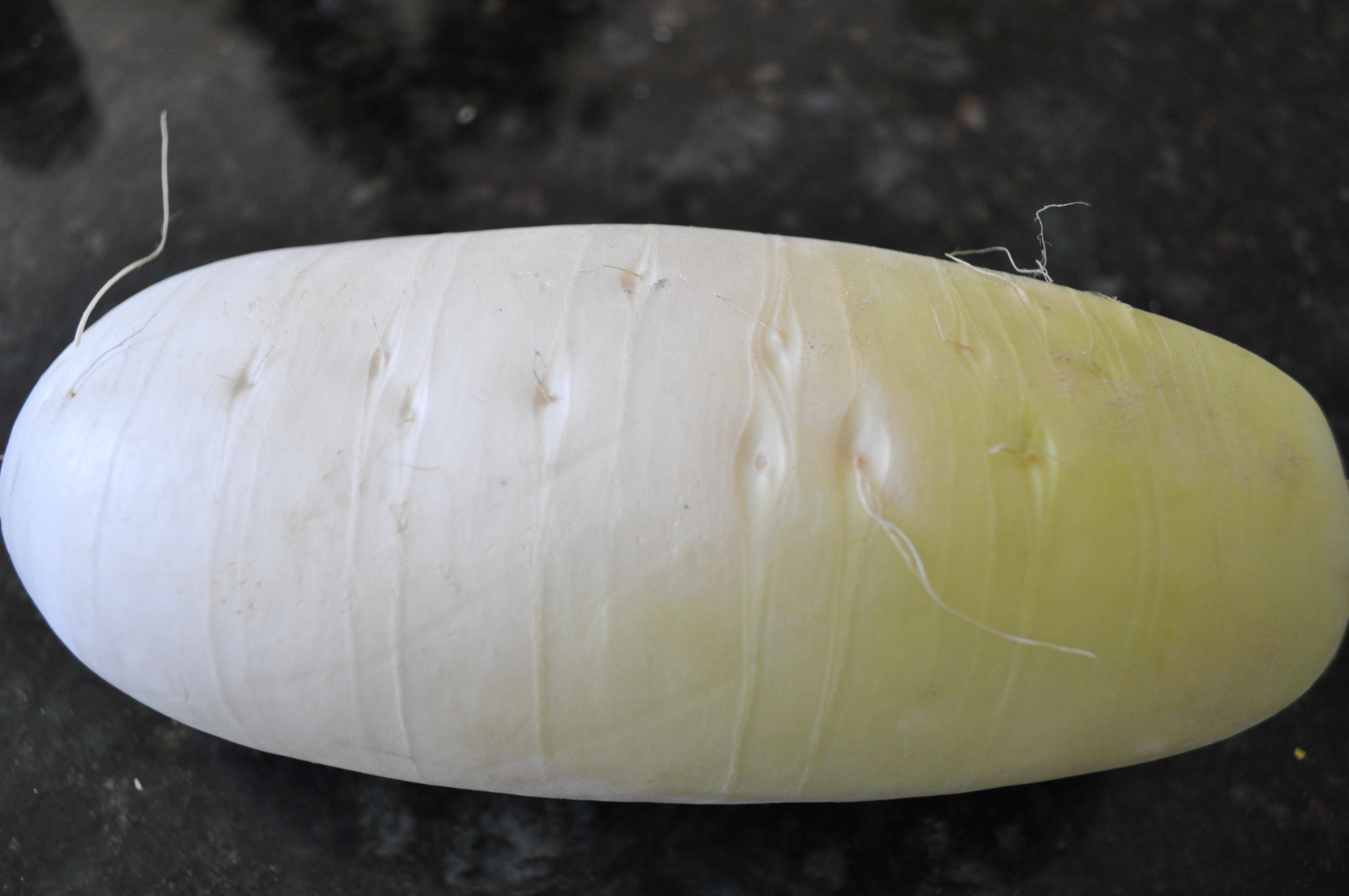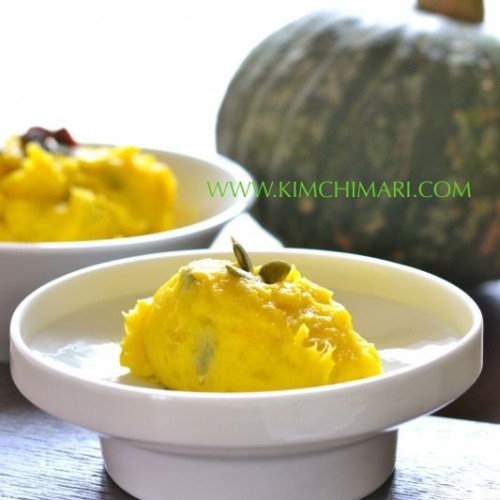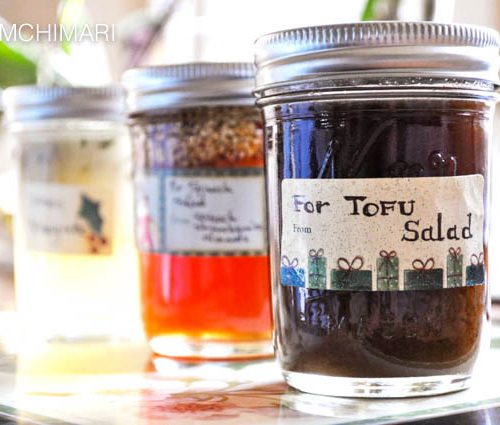
The weather finally warmed up this past weekend and we had a wonderful Beef Kalbi (ribs) BBQ party in our backyard with our church friends. We try not to have Kalbi too often since it’s really not the healthiest food but it’s just too delicious to not eat it..So when we eat Kalbi, we make sure we add vegetable side dishes to balance off the cholesterol and reduce any carcinogenic effects of eating grilled meats.
Ssam and Ssamjang is of course certainly a ‘must have’ side dish for Kalbi. The lettuces, crown daisies, perilla leaves all help with digestion and have great anti-oxidant properties. Not to mention the high content of various vitamins and minerals. Since my friend was going to take care of the Ssam and Ssamjang, I made some Dwenjang Jjigae(된장찌게) and Moosaengche(무생채) to go with the Kalbi. Mooseangche is a salad made from the Korean radish (moo). Radishes are great because it has various digestive enzymes ( diastase, amylase, and esterase) that help us digest carbs, fats and proteins. Growing up, I remember seeing many Korean adults drink the juice of a radish kimchi whenever they had indigestion and now I know why. So, next time you are served grated radish with your Japanese tempura or radish salad with your Korean BBQ, be sure to eat it. In addition to the digestive enzymes, researchers at Tokyo’s College of Pharmacy have discovered that “daikon juice actually inhibits the formation of dangerous chemicals in the body. Nitrosamines, a type of carcinogen, can form in the stomach from chemicals present in both natural and processed foods. Daikon juice contains substances identified as phenolic compounds that can block this potentially dangerous reaction.”(Mitoku)
Moosaengche is usually made two different ways: one tastes more spicy and salty – this is pretty much the mixture that is used to season cabbage Kimchi. The other variation introduced here is made without any garlic or jeotgal (fermented shrimp or anchovies) which creates a very clean and crisp flavor.
Ingredients
- 6 C julienned Korean radish (무 moo)
- 4 tsp sea salt
- 5 T sugar
- 5 T rice vinegar
- 1 T Korean red pepper powder(고추가루 gochugaroo)
Directions
1. Wash and peel the radish. Buying good Korean radish is important because it really dictates the taste of this dish other than the seasoning. Here’s how to tell if a radish is fresh and of good quality: fresh radish has a smooth skin and should feel totally firm when pressed. Poor quality radishes can also have little air pockets inside which means air went into the radish as it was growing in the field. These radishes are drier, less sweet and is low on nutrients. To pick radishes without these air pockets, pick up a few similar sized radishes and compare the weight of them. Radishes that have air pockets inside are lighter in weight than the ones that are solid. If a Korean radish is not available, you can also use the Japanese Daikon radish but it’s just not the same..

2. Peel and julienne the radish. One large radish should make about 6 Cups.

3. Put the cut radish into a large bowl and sprinkle with sea salt. Toss the radish pieces to distribute the salt evenly. This will quickly pickle the radish to draw out the moisture and make it crunchy. Leave the mix a couple minutes or so and it should lose it’s crispness and look like below.

4. Add the vinegar, sugar and red pepper powder. You can add more or less to taste.

Korean Radish Salad (Moosaengche)
Ingredients
- 6 Cup julienned Korean radish (무 moo)
- 4 tsp Sea Salt (Trader Joe's)
- 5 Tbsp sugar
- 5 Tbsp rice vinegar
- 1 Tbsp Korean red pepper powder (고추가루 gochugaroo)
Instructions
- Wash and peel the radish.
- Peel and julienne the radish. One large radish should make about 6 Cups.
- Put the cut radish into a large bowl and sprinkle with sea salt. Toss the radish pieces to distribute the salt evenly.
- Add the vinegar, sugar and red pepper powder. You can add more or less to taste.
Tips & Notes:
- Sodium level is high because it calculates ALL salt content although you will normally be eating the radishes and not the liquid. Lot of salt and other seasonings will be in the liquid and not the radish itself.
- Buying good Korean radish is important because it really dictates the taste of this dish other than the seasoning. Here’s how to tell if a radish is fresh and of good quality: fresh radish has a smooth skin and should feel totally firm when pressed. Poor quality radishes can also have little air pockets inside which means air went into the radish as it was growing in the field. These radishes are drier, less sweet and is low on nutrients. To pick radishes without these air pockets, pick up a few similar sized radishes and compare the weight of them. The heavier the better.
Nutrition Information:
Variations
Optionally you can add any or all of the following:
3 T chopped garlic, 1 – 2 T saewoojot, sliced green onions, more red pepper powder and roasted sesame seed. Adding these will produce a stronger, spicier flavor which is also really fabulous!! Good luck!





















Hi,
Thank you for this post, my son loves the radish salad. I think the variation you mentioned at the end is what I’ve been looking for. When I was a kid in the late 60s, I used to eat something called Chang Ah Gee, it was spicy julienne radish, in a dark in color sauce, probably pickled. Have you heard of anything like this.
Hi Arden – I’m so glad your son enjoys my radish salad. It’s also my daughter’s favorite too. I think I know what you are talking about. I have Jangahjji recipe on my blog https://kimchimari.com/fantastic-summer-pickles-%EC%9E%A5%EC%95%84%EC%B0%8C-jangahjji/. I use just cucumbers, peppers and onions mostly in this recipe but you can substitute or add radish to the same recipe and you should have what you are talking about. Hope this is the one! Good luck!
I just made this. So easy with a “mandoline” to julienne! Serving tomorrow with sauteed perilla and gochujang meatballs. Oh, and it’s so yummy! Thanks for sharing the recipe.
Excellent! Koreans use mandoline all the time to julienne radishes. Sauteed perilla and meatballs sounds like a perfect combination. Thank you so much for your comment!
just spent 10 days in Korea,traveling around North to South and Jeju do.Just loved Korean food .I live in South Afrca and wonder how I can reproduce some of the recipes. Just felt such a tasty,healthy diet.
How wonderful! You probably have seen more of Korea than I have…Yes, you are right, overall a very tasty healthy diet – minus the very spicy and salty dishes. :)) I try to offer substitutes on different ingredients so ask me if you can’t get anything..good luck!
Did you leave the water that was drawn out of the radish after you put the salt on it?
Also, how long do you usually let it sit after putting the rest of the ingredients into the mix? Or do you eat it right away?
Great question! I usually drain the water out after it is drawn out from the radish. You can eat it pretty much right away or let it sit for a while. It will not make much difference. Thanks for stopping by!
wow looks refreshing and yummy! i’m going to make it tonight (:
Hope it turned out well! Thanks for commenting!